Builders Socarenam Preceded by CDIC Beam 12.8 m (42 ft 0 in) Displacement 258,500 kg | Operators Marine Nationale Completed 4 Length 30 m | |
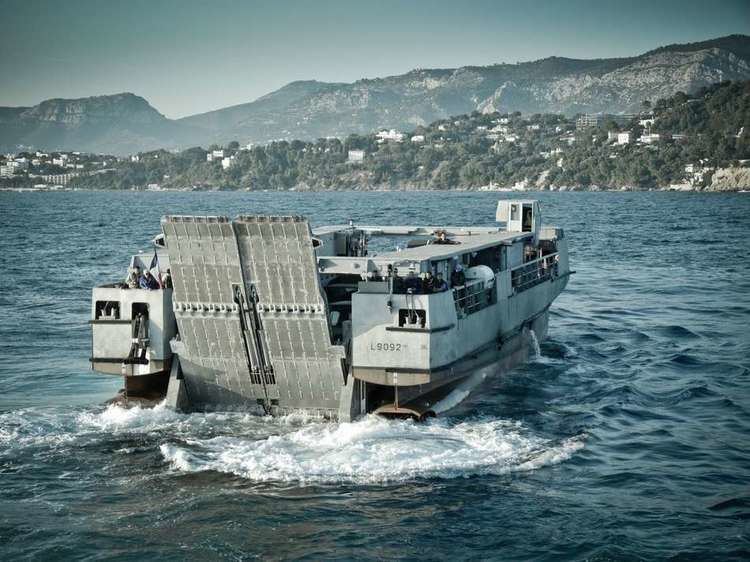 | ||
Builder Societe De Constructions, De Reparations Navales Et De Mecanique | ||
euronaval 2016 engin de d barquement amphibie rapide eda r
The Engin de débarquement amphibie rapide (EDA-R) is a class of Roll-on/Roll-off catamaran landing craft (L-CAT) ordered by the French Navy. They transport weapons systems, equipment, cargo and personnel of the assault elements from Mistral class amphibious assault ships to shore and across the beach.
Contents
- euronaval 2016 engin de d barquement amphibie rapide eda r
- Design and development
- Operators
- Specifications EDA R
- References
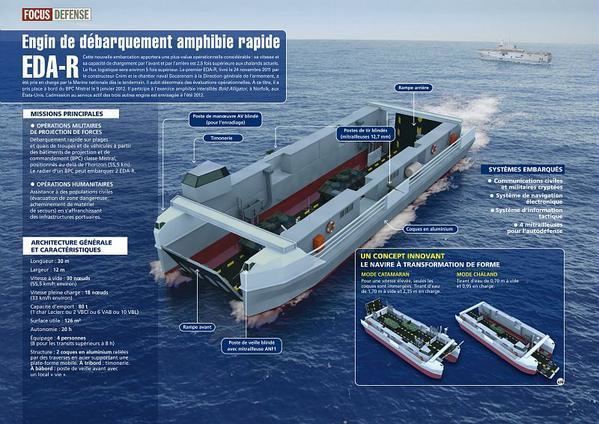
Design and development
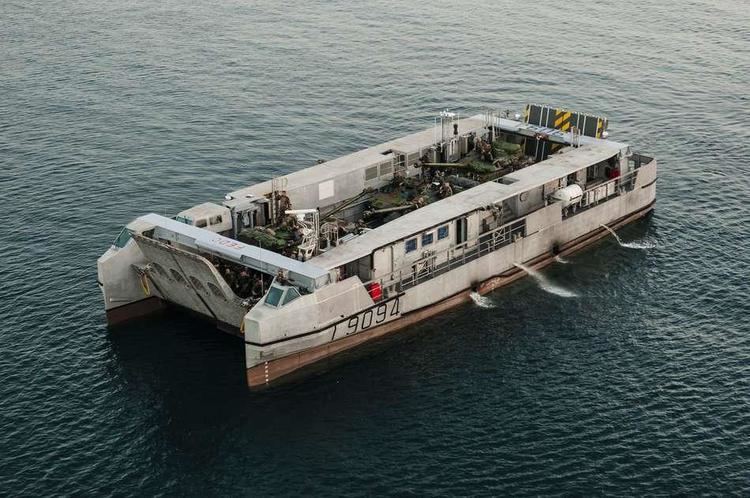
Concept design of the EDA-R began in 2000 at Constructions industrielles de la Méditerranée (CNIM) then was abandoned in 2003 and relaunched in 2008 with the full-scale Landing Catamaran (L-Cat). During the development stage, one prototype was built by Gamelin Shipyard and tested during an autonomous transfer from Saint-Malo to the Military port of Toulon. On 14 October 2008, the prototype of the L-Cat beached on the shores of Toulon. On March 2010, it offloaded a 54-ton Leclerc main battle tank at Toulon.
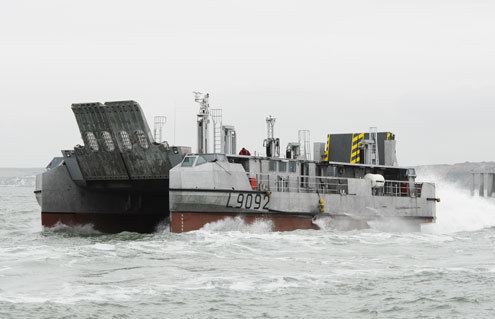
According to CNIM the craft delivers the performance of an aircushion landing craft but at the cost of a conventional landing craft. Four units have been purchased and were presented to the Navy in January 2011.
CNIM is proposing a variant of the L-CAT to fulfill the U.S. Army's requirement for a replacement for their aging LCM-8 "Mike boats."
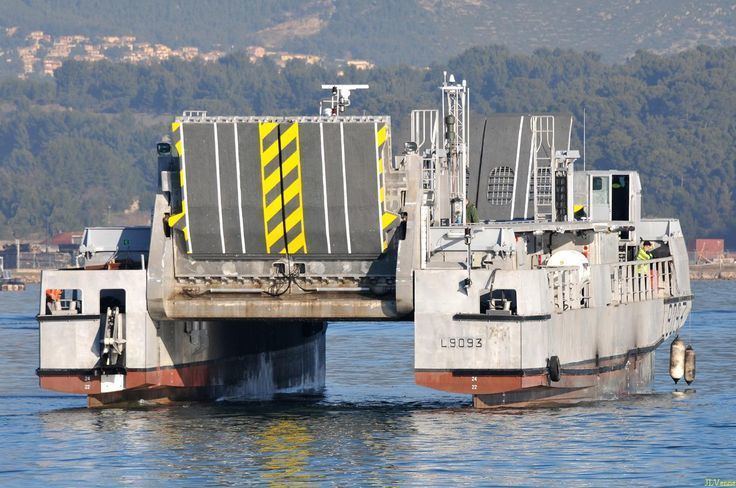
In October 2016, CNIM revealed a new variant called L-CAT shore-to-shore, designed for smaller navies that don't have larger amphibious ships to deploy landing craft from. It has a bigger hull to accommodate more personnel and provide improved seakeeping, with an expanded length of 32.6 metres (107 ft) and beam of 13.2 metres (43 ft), with seating increased from 40 to 54. The L-CAT shore-to-shore can carry enough fuel to travel 1,000 nautical miles (1,200 mi; 1,900 km) without payload, or 800 nmi (920 mi; 1,500 km) with a 100-ton payload, and be able to move at 22 knots (25 mph; 41 km/h) empty and 15 knots (17 mph; 28 km/h) with a full load. Because of its potential to operate independently, it is fitted with the LYNCEA naval mission management system, and can be mounted with various features such as two unmanned 20 mm guns or a towed array system providing submarine detection capabilities.
Operators
Specifications (EDA-R)
Source: Naval-Technology Fact File
